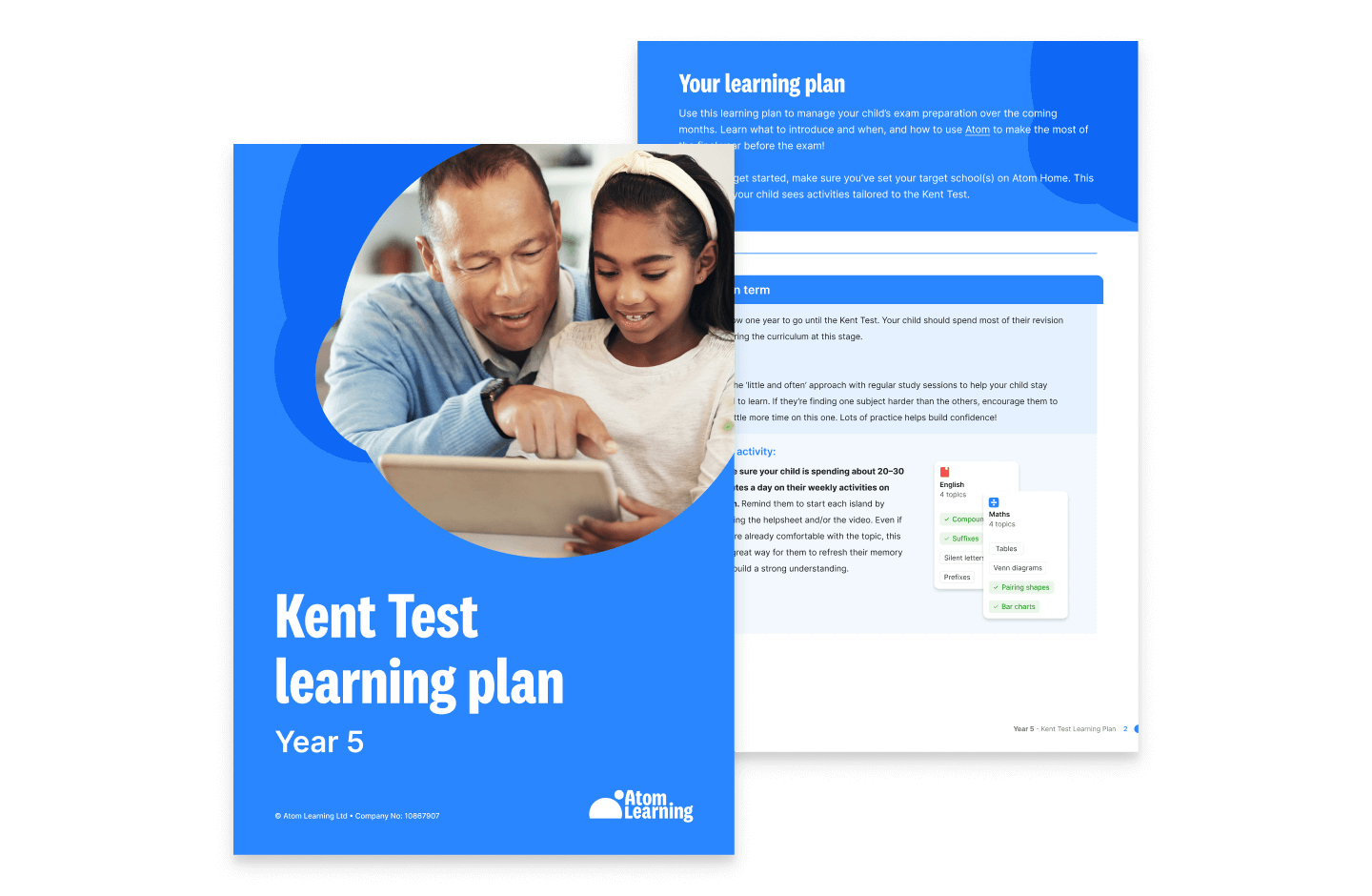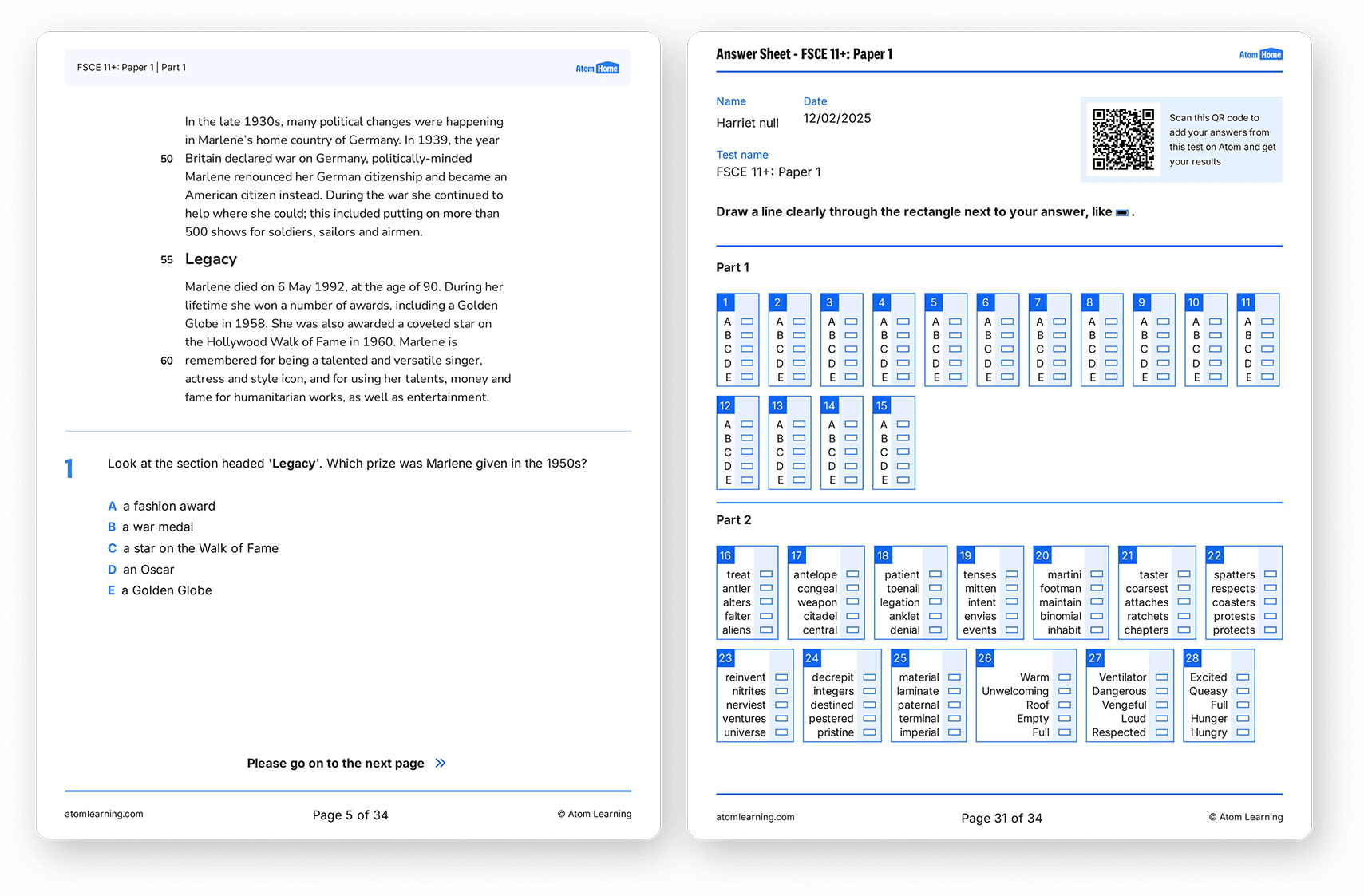Please note: the FSCE 11+ exam may be changing the structure and content of the test from September 2025. For specific information about your target grammar school's exam, we recommend checking the school website directly.
If your child is aiming for a grammar school that uses the FSCE 11+, this guide will tell you what the exam is, how it works, and how to help them get ready.
Key takeaways:
- The exam tests English, maths and creative writing and is taken on paper.
- From September 2025, subjects tested by some schools may include any of the following: Art & Design, Computing, Design & Technology, English, Geography, History, Languages, Mathematics, Music, Physical Education, and Science.
- There are a mix of question types in the exam. These include multiple-choice questions and free response questions.
- The pass mark, or qualifying standard, is decided by individual schools.
What is the FSCE 11 plus?
The FSCE 11 plus is a Year 7 entrance test. It was created by Future Stories Community Enterprise – linked to Reading School – in 2022. The test helps grammar schools see which students might thrive there.
Which grammar schools use the FSCE 11 plus?
Here are some schools using the FSCE 11+ for 2026 entry:
- Chelmsford County High School for Girls (Essex)
- Colyton Grammar School (Devon)
- Heckmondwike Grammar School (West Yorkshire)
- Lancaster Girls' Grammar School (Lancashire)
- North Halifax Grammar School (West Yorkshire)
- Reading School (Berkshire)
- Skipton Girls' High School (North Yorkshire)
- The Crossley Heath School (West Yorkshire)
What is the format of the FSCE 11 plus?
The FSCE 11 plus exam is taken on paper. For all papers, your child must write their answers in the spaces provided. Any other work will not be seen or marked.
The instructions are read out by a voice recording. At the start of each section, the voice recording will tell children:
- which page number they must turn to
- the section number and name
- instructions for how to answer the questions
- an example question (also printed in the question booklet, so they can follow along)
- how much time they have to complete the section
- when they can start answering the questions
- how much time they have left before the end of the section
At least one exam invigilator will available to help your child if they need any support.
Your child’s details, such as their name, primary school, and date of birth, plus the date and time of the test, will be pre-written on each of their answer sheets. If any information is incorrect, they can raise their hand at the start and an invigilator will help.
There are three papers in total, including:
1. Multiple choice paper
- This paper contains a mixture of English and maths multiple choice questions. On an answer sheet, your child will select the best answer, A, B, C, or D.
2. Free response paper
- This paper also contains a mixture of English and maths questions.
- Your child will need to provide written answers to questions in the space provided.
3. Creative writing paper
- Your child will need to write a full extended answer to a prompt. We've included more information about this paper below.









